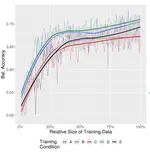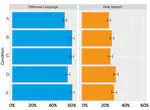Stephanie Eckman
Researcher & Data Scientist
I have a Ph.D. in Statistics & Methodology. I collect high quality data for social science and model training
Skills
R coding
Statistics, Data Science, Machine Learning
International Data Collection
Experience
Principal Research Scientist
Researcher and Data Scientist
Fellow
- Conducting and publishing research into data quality
- Mentoring junior researchers
- Providing scientific leadership to the institute
Senior Researcher
- Conducting and publishing research
- Advising on design of IAB surveys
Chair of Sociology (Interim)
- Conducting and publishing research
- Teaching courses in data analysis & research methods
- Mentoring students
Methodologist
Recent Publications
Recent & Upcoming Talks
Research Projects
Additional Publications
Quickly discover relevant content by filtering publications.
(2022).
The Precision of Estimates of Nonresponse Bias in Means.
JSSAM.
(2021).
Comparing Estimates of News Consumption from Survey and Passively Collected Behavioral Data.
POQ.
Contact
- steph@umd.edu





